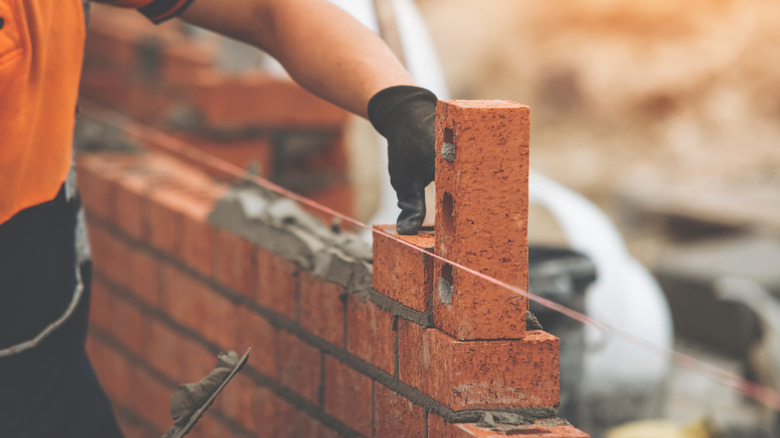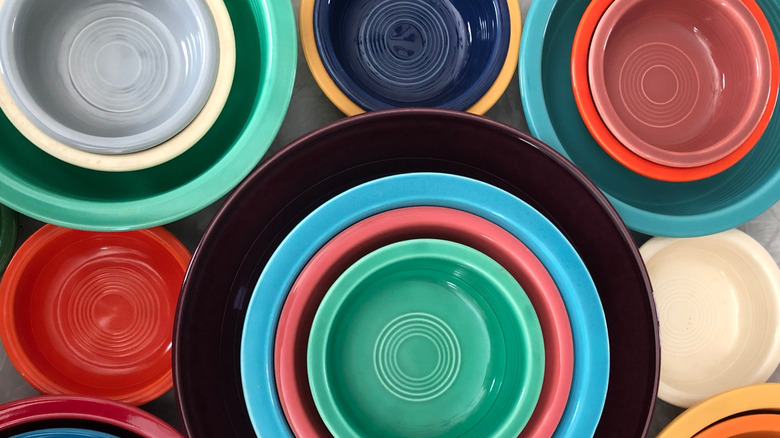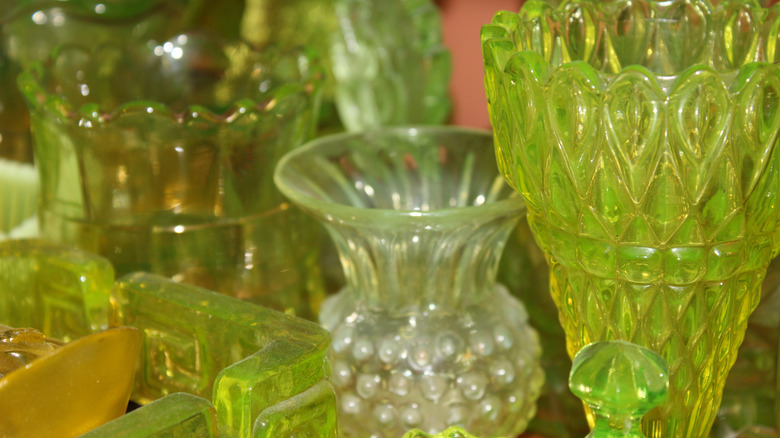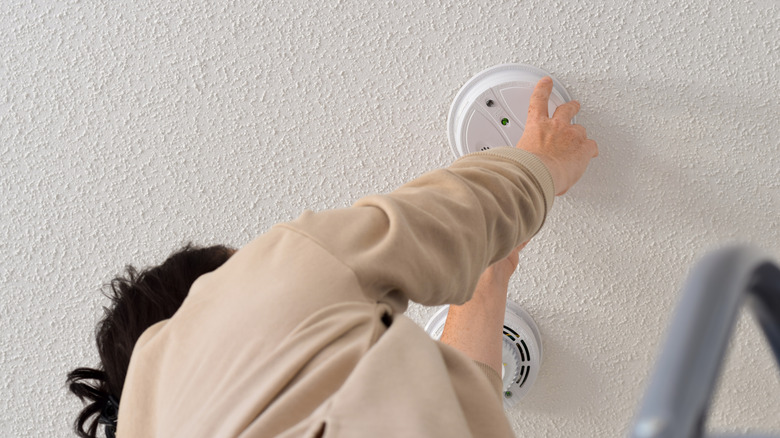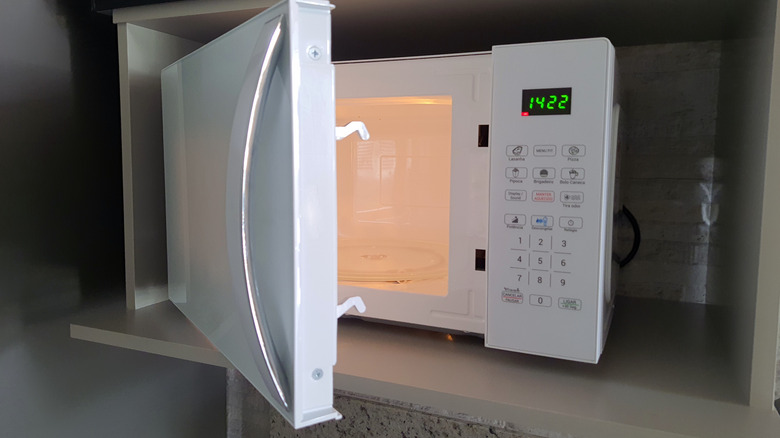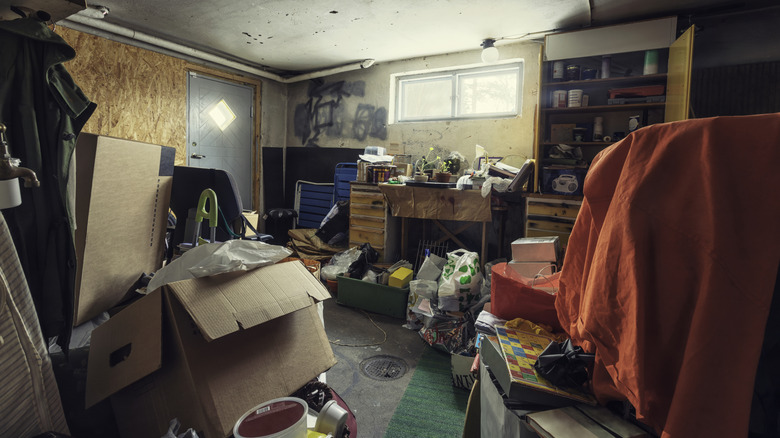9 Radiation Sources In Your Home That Are At Least Worth Knowing About
Knowing that you're living with radiation sources might make you feel like there are scary dangers lurking around your home. But radioactive materials are actually found everywhere — in the earth, our bodies, the floors and walls of our homes, and in the food and drinks we consume. There are natural sources, such as cosmic radiation from space, and terrestrial radiation from dirt, water, and vegetation. There are also manufactured sources that come from things like televisions, smoke detectors, and building materials. While the sources might vary, the radiation that results is the same.
The amount of radiation produced by sources found in most homes is relatively low. For example, eating a single banana can result in the same amount of radiation as living within 50 miles of a nuclear power plant. So, while there is no need to panic (and certainly no need to quit eating bananas), it is helpful to know which things you own might be contributing to the overall amount of radiation in your home. Too much radiation can affect your health, and knowing your exposures can help you effectively limit the overall amount of radiation in your home.
Building materials
If you live in a brick home, you might be interested to know that building materials made of brick, concrete, and sandstone can emit a low level of radiation. These building materials are composed of radium, uranium, and thorium. When these elements begin to decay, they turn into a radioactive gas called radon, which is colorless and odorless. While all outdoor and indoor air has some radon in it, the gas can get trapped inside your home and build up over time. It's important to take the essential steps to protect your home and prevent radon exposure.
Granite countertops
Unfortunately, your granite countertops may have a radioactive consequence. Granite contains uranium, an element that can break down over time and turn into radon gas. The good thing about granite is that it's not porous, and the crystals can actually trap the radon, keeping it locked in the countertop. Most granite countertops are also sealed, which helps keep the radon from escaping into the air. However, as the seal wears over time, and given the many variables between countertops and installation methods, there's no clear way to estimate how great the exposure to radon is from granite countertops.
Vintage ceramic dinnerware
The brightly colored vintage ceramic plates, bowls, and cups produced between the 1930s and 1970s often contain uranium in the glaze. During that timeframe, it was common to use uranium to get those distinctively vibrant colors like orange and red. Approximately two million pieces of dinnerware were produced using that method, many of which still sit in thrift stores and homes. Using these plates or cups to eat or drink from can raise your exposure, so it's probably best to stick with more modern dinnerware for functional use.
Vintage glassware
You might want to check your collection of glowing, yellow- or green-tinted glassware. It turns out the vintage tint people like so much was created using uranium. Popularized by 19th-century European glassmakers, the glass known widely as vaseline or canary has a greenish glow when exposed to blacklight. This cool feature comes at the cost of radiation exposure that can continue to be emitted at low levels for years. Needless to say, you shouldn't use these items to consume food or beverages. You might also want to display them in a cabinet or low-traffic area to reduce exposure.
Smoke detectors
No one wants to hear that smoke detectors might be contributing to the radiation exposure in their home. They are, after all, supposed to be a safety feature. But it's important to note that some smoke detectors use a radioactive source to detect smoke particles: ionization smoke detectors. These emit very small amounts of radiation, which is sealed in a small chamber within the smoke detector, and would most likely only be harmful if ingested. There is no need to throw out all your smoke detectors, but it's worth noting to gauge your home's radiation exposure levels overall.
Televisions and computer monitors
If you're still clinging to your old television set, you might be unknowingly exposing yourself to radiation. Older televisions are made with cathode ray tubes (CRTs), which act as low-grade X-rays. While CRT television sets were mostly phased out in the mid-2000s, some were still being produced as late as 2010. Fortunately, the vast majority of televisions and computer monitors have been replaced with LCD or plasma screens, which are not contributors to radiation levels in your home. However, some people still use CRTs specifically for vintage computers and video gaming as a hobby.
Microwave oven
While microwaves are an incredibly convenient appliance, they do come with minor radiation exposure risks. Microwaves use electromagnetic energy, similar to radio waves. When maintained in good condition, the microwave is able to keep the radiation contained inside. However, with wear and tear or damage that creates gaps or breaks seals, the radio waves can leak out, increasing exposure. You can prevent this by checking that the door hinges, latches, and seals are in good condition. Be sure to replace your microwave if the door doesn't shut properly or there is any other damage.
Basements
A surprising number of homes — about one out of every 15 houses in the U.S. — have elevated levels of radon, the EPA estimates. The odorless, colorless gas can be harmful and is produced by decaying uranium found in nearly all soils. The ground surrounding the basement of your home contains this source of radiation in the form of radon, which can seep through the porous materials used to build the basement walls as well as any cracks in the foundation. The gas then gets trapped inside and can move up into the rest of your home.
Clocks and watches
Some clocks use paint designed to glow in the dark, which contains radium. Radium is a highly radioactive substance, which is probably why the practice of using such paint phased out around 1970. Nowadays, it's more common to see tritium or promethium used, both of which are radioactive but have much shorter lifespans. Wrist watches are also commonly made with tritium to make them glow in the dark. It is generally contained within the covered face of the watch. Avoiding glow-in-the-dark clocks and watches is one way to lower the risk of radiation exposure.

